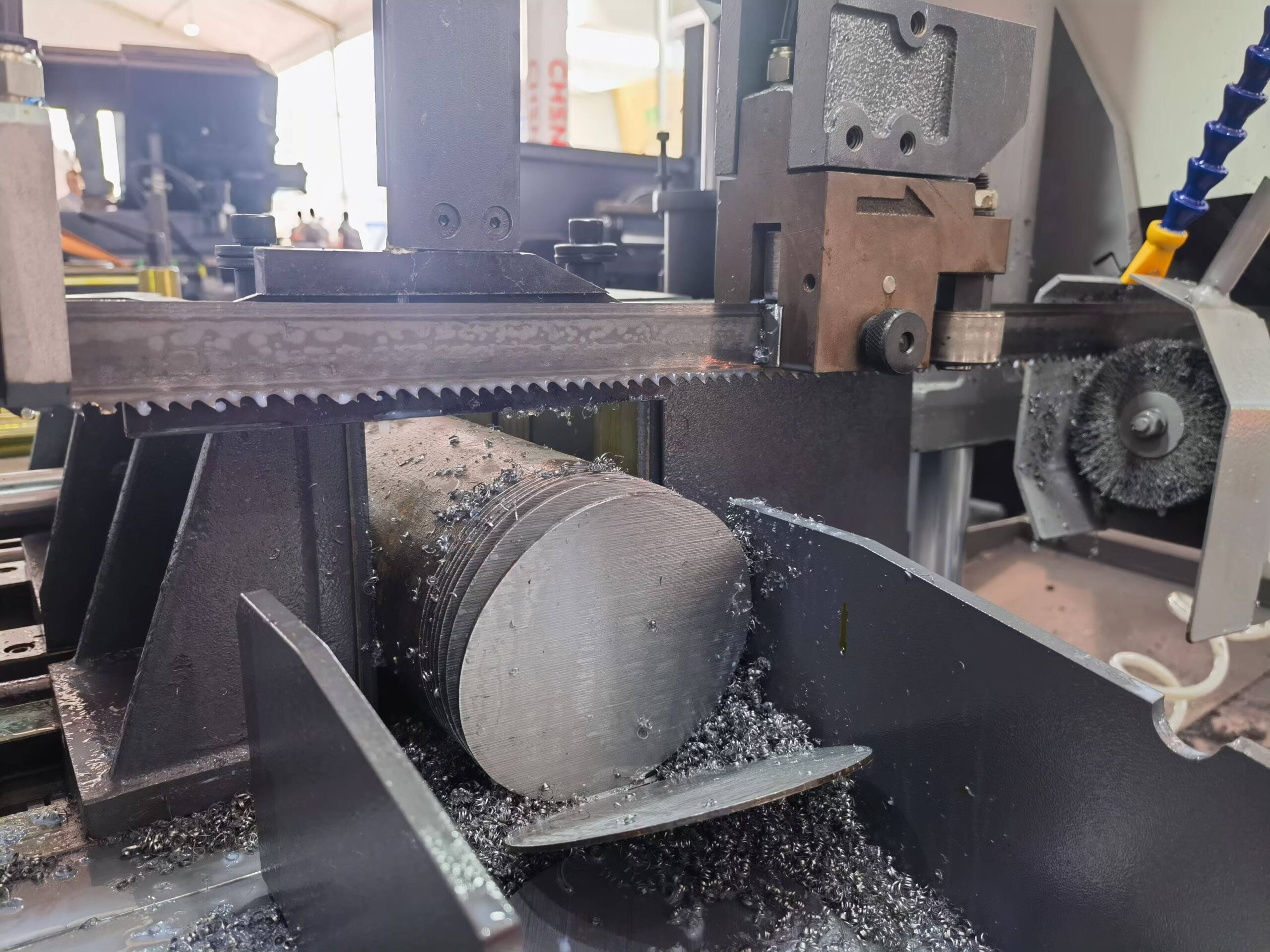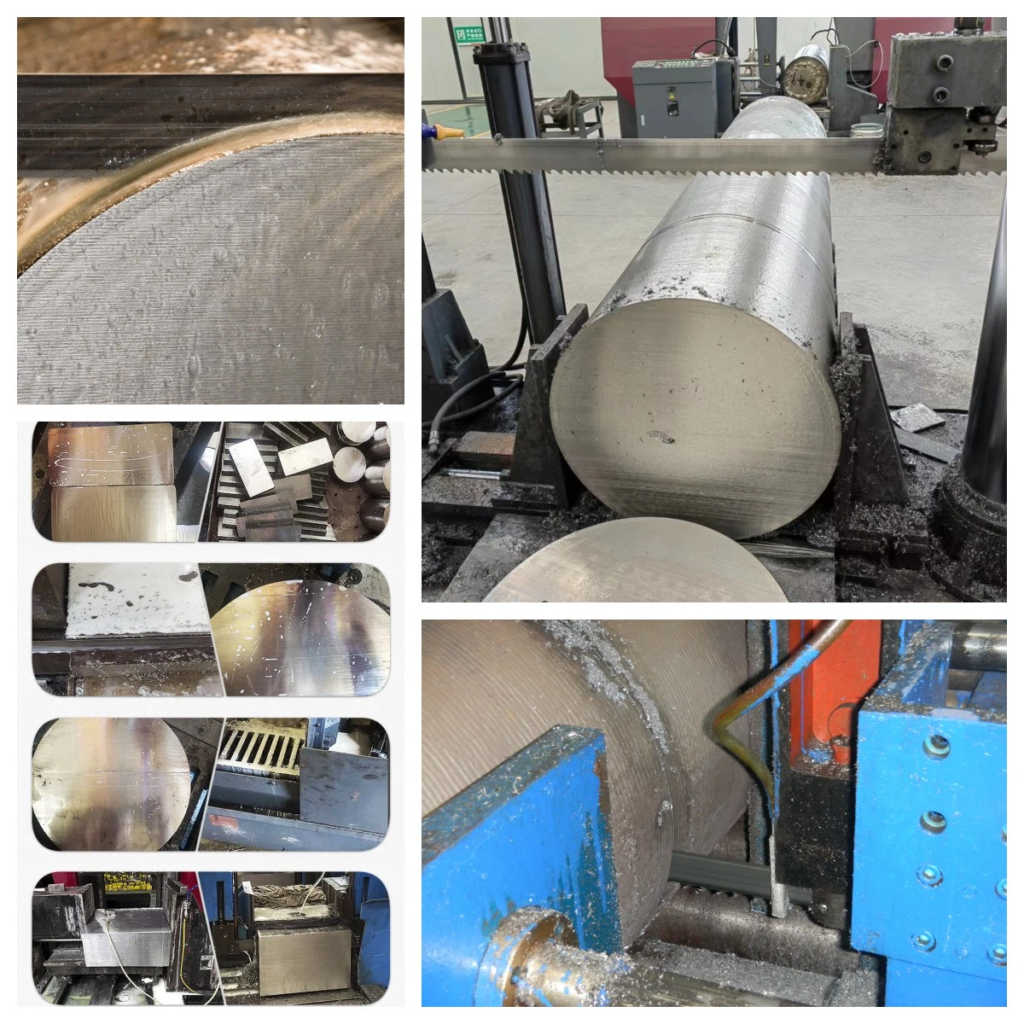As a bandsaw blade manufacturer, I often encounter customers frustrated by blade breakage during operation. Understanding the reasons behind this issue is essential for improving productivity and reducing costs. Let’s explore the common causes and how to prevent them.
A bandsaw blade can break due to several factors, including improper tension, incorrect blade guides, excessive feed rate, or dull blades. Regular maintenance, proper setup, and correct tensioning of the bandsaw can significantly reduce the risk of blade breakage.
Now that we've highlighted the leading causes, let’s delve deeper into each reason and discuss practical solutions to prevent blade failure.
Why Did My Bandsaw Blade Break?
One of the most common reasons blades break is improper blade tension. If the blade is too tight or too loose, it will bow under pressure and fail prematurely. The tension can crack or break under pressure if it is too high. If it’s too low, it can walk off the wheels, wear out, and break.
To combat these issues, consult your bandsaw manufacturer for the correct tension settings. Many newer bandsaws have a built-in tension gauge to help you set the blade to the recommended tension. Also, check the blade tension every time you put a new blade on to ensure it’s running properly.
What Should You Do If the Blade Breaks While Operating the Band Saw?
If your bandsaw blade breaks while in use, you first want to shut off the power. Get clear of the machine until it stops. Have a plan in place for this type of event. Ensure your employees know where the emergency shut-offs are and what to do when a blade breaks.
Once the machine is stopped, let your shop staff know so they can replace it. They must wear the appropriate personal protective equipment (PPE) when handling the broken blades so they don’t cut themselves. Also, you need to figure out why the blade broke in the first place so it doesn’t happen again.
Why Does My Saw Blade Keep Breaking?
One of the key factors is you don’t have enough tension on the blade. If your blade breaks too often, it’s probably because you don’t have enough tension. You pluck the blade and listen to the sound to check the tension. If it makes a high “plink” sound, it’s good. If it makes a “clunk” sound, it needs more tension.
Another thing that causes blades to break is you’re pushing too hard sideways when you’re making turns or cutting curves. Don’t push the blade too hard against the material when cutting sharp curves. Let the blade do the work and feed the material through steadily. Over time, pushing too hard will make the blade weak, and it will break.
What Are 10 Ways That the Blade Can Break?
Understanding the various causes of blade breakage can help prevent future issues. Some common reasons include:
- Improper alignment of the blade guides: If they are not aligned properly, the blade can rub against them and break.
- Too much tension on the blade: We mentioned earlier that too much tension can cause stress fractures in the blade.
- Too much feed pressure: Bend the blade if pushing too hard while cutting.
- Blade speed too high: If the bandsaw is faster than the blade is rated for, you can overheat it and cause it to warp.
- Blade not tracking properly: If the blade doesn’t track properly on the wheels, it can wear unevenly and eventually break.
- Teeth contacting the guides: Blades too wide for the guides can wear out and eventually break.
- Using a dull blade: A dull blade requires more force to cut, which can cause the blade to break.
- Mechanical damage during cutting: I accidentally ran into a hard material and broke the blade.
- Fatigue from repeated stress cycles: When you bend something back and forth enough times, it breaks. That’s what happens with a blade.
- Environmental factors: Temperature and humidity can affect the integrity of the blade.
Solutions to Prevent Bandsaw Blade Breakage
Preventing blade breakage starts with regular maintenance and proper setup. Here are some effective tips:
- Always check and adjust blade tension before use: Check the tension. Make sure the tension is set at the proper level. Refer to the manufacturer’s guidelines. It takes a few seconds to set the tension correctly. This one step will triple the life of your blades.
- Ensure blade guides are properly aligned: Ensure your guides are aligned so the blade doesn’t wear unevenly. Check and adjust them regularly.
- Use blades appropriate for the cut material: Different materials require different blade types. For example, using a blade designed for metal cutting on wood can lead to rapid wear and breakage.
- Regularly inspect blades for wear and replace them as needed: Make it a habit to check your blades. Look for cracks, chips, or if they’re dull. Replace them before they break.
- Maintain a clean work area: Keep the area clean. Sweep up the sawdust and debris. Keep the area free from obstacles that can catch the blade.
- Train staff on proper operating procedures: Ensuring that everyone is familiar with best practices for using bandsaws can reduce errors that lead to breakage.
Understanding why bandsaw blades break is crucial for wholesalers and buyers alike. We can enhance blade longevity and operational safety by implementing the discussed solutions. Investing time and resources in proper maintenance and usage extends your blades' life and makes you more productive and safer.
Conclusion
Maintaining a proactive approach to blade management can save time, reduce costs, and ensure that your operations run smoothly. By staying informed and following best practices, we can minimize the risk of blade breakage and improve the efficiency of our bandsaw operations.




